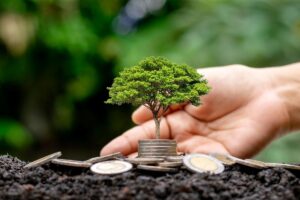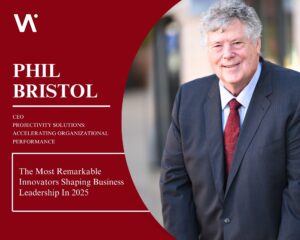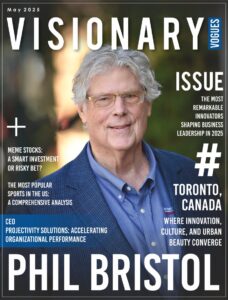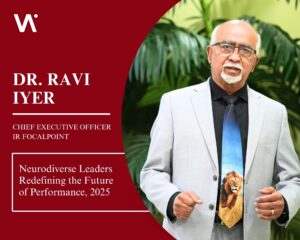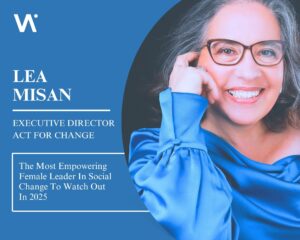daily scoop
Circular Economy Explained: A Smarter Way to Do Business
In a world where waste is piling up, natural resources are dwindling, and climate anxiety is becoming a daily reality, it’s clear that the traditional “take-make-dispose” model of doing business is no longer sustainable. We’re consuming more than the planet can regenerate, and producing more waste than it can absorb. The result? Environmental degradation, economic volatility, and an urgent need for change.
But there’s a smarter way to do business, one that challenges wastefulness, reimagines value creation, and builds long-term resilience. Welcome to the circular economy.
The circular economy isn’t just a buzzword or trend; it’s a transformational business philosophy that’s gaining traction across industries, from fashion and tech to food and construction. It’s about designing out waste, keeping products and materials in use longer, and regenerating natural systems. And it’s more than environmentally sound, it’s economically smart.
In this article, we’ll break down what the circular economy means, how it works, why it matters now more than ever, and how forward-thinking businesses are embracing it to future-proof their operations.
The Linear Economy: Why It’s Broken
Before diving into the circular model, let’s understand the status quo, the linear economy.
The linear economy operates like this:
Take → Make → Use → Dispose
- We extract raw materials from the earth.
- We manufacture products.
- We use them, often briefly.
- Then, we discard them, usually in landfills or incinerators.
This model is simple, fast, and profitable, for a while. But it comes with hidden costs:
- Resource depletion
- Greenhouse gas emissions
- Massive waste
- Economic inefficiency
It’s a system that assumes infinite resources and infinite space for waste, neither of which exists.
In contrast, the circular economy is built to thrive within the limits of our planet.
What Is the Circular Economy? A Definition with Purpose
The circular economy is an economic model designed to eliminate waste and pollution, circulate products and materials, and regenerate nature.
It’s inspired by nature’s cycle, where nothing is wasted and everything has a purpose.
Rather than focusing on short-term extraction and disposal, circular businesses prioritize long-term value, durability, reuse, repair, refurbishment, remanufacturing, and recycling.
The circular economy operates on three key principles, according to the Ellen MacArthur Foundation:
- Design out waste and pollution
- Keep products and materials in use
- Regenerate natural systems
This model doesn’t just tweak the old ways; it fundamentally rethinks them. And as we’ll see, the benefits are not just environmental but also economic and social.
Linear vs. Circular: A Quick Comparison
Why the Circular Economy Matters, Now More Than Ever
The shift to a circular economy is no longer optional; it’s essential. Here’s why:
1. Environmental Urgency
Climate change, biodiversity loss, and ocean plastic, linear models are major contributors. A circular economy can reduce carbon emissions by up to 39%, according to a report by the International Resource Panel.
2. Resource Scarcity
Critical materials like lithium, cobalt, and rare earth metals are finite. Circularity ensures these resources are looped back into the system.
3. Economic Opportunity
The World Economic Forum estimates that transitioning to circular systems could unlock $4.5 trillion in economic benefits by 2030.
4. Consumer Demand
Modern consumers, especially Gen Z and Millennials, want sustainable, ethical products. Businesses that adopt circularity enhance brand trust and loyalty.
5. Policy and Regulation
Governments across the globe are enforcing bans on single-use plastics, right-to-repair laws, and circular procurement policies. The EU’s Circular Economy Action Plan is leading the charge.
How Circular Business Models Work
Circular economy isn’t a one-size-fits-all model; it can be applied in many innovative ways. Here are some of the most impactful circular business strategies:
✦ Product-as-a-Service
Instead of selling a product, companies lease or rent it. They retain ownership, maintain it, and take it back at end-of-life.
Example: Philips offers “Lighting-as-a-Service,” where customers pay for light, not light bulbs.
✦ Repair and Maintenance Services
Businesses provide easy access to repair, extend product life, and build customer trust.
Example: Patagonia’s “Worn Wear” program repairs and resells old gear, encouraging longevity.
✦ Take-Back and Resale Programs
Brands offer incentives for customers to return used items, which are then refurbished or resold.
Example: IKEA’s Buy Back program accepts gently used furniture for resale or recycling.
✦ Remanufacturing and Refurbishment
Companies rebuild old products to like-new condition, reducing raw material use and emissions.
Example: Caterpillar remanufactures old engines, reducing waste and saving costs.
✦ Design for Disassembly
Products are designed so that parts can be easily replaced, reused, or recycled.
Example: Fairphone creates modular smartphones built for repair and upgrade.
Case Studies: Circular Champions
Interface: Regenerating the Flooring Industry
Interface, a carpet tile manufacturer, is committed to becoming a fully sustainable company by 2020 and has made significant strides. Through its “Climate Take Back” initiative, it uses recycled fishing nets and bio-based materials in its carpets, proving that circularity and profit can coexist.
Loop: Reinventing Packaging
Loop, by TerraCycle, is redefining packaging by offering reusable containers for everyday products, shipped back, cleaned, and reused. Major brands like Nestlé, Unilever, and Coca-Cola are on board.
The Ellen MacArthur Foundation
This global organization has been instrumental in promoting circularity. Its partnerships with cities, corporations, and policymakers have sparked large-scale change, from fashion to food.
The Digital Boost: Tech Accelerating Circularity
Technology plays a pivotal role in scaling circular practices:
- Blockchain ensures transparent supply chains and verifies recycled content.
- AI and machine learning optimize logistics and predictive maintenance.
- Digital twins simulate product lifecycles and waste scenarios.
- IoT sensors track product usage, enabling smarter repairs and reuse.
Startups are also using platforms like mobile apps to promote peer-to-peer sharing, renting, or reselling, extending product life, and democratizing access.
Challenges in Transitioning to a Circular Economy
Despite its potential, circularity is not without obstacles:
- Upfront investment in redesign, logistics, and infrastructure
- Consumer behavior not everyone wants used or refurbished products
- Lack of skilled workforce for repair, remanufacturing, and material innovation
- Policy misalignment and inconsistent standards across regions
- Metrics and measurement difficulties How do we define success in circularity?
Overcoming these challenges requires collaboration across sectors, incentives from the government, and cultural shifts in how we perceive ownership, value, and waste.
How Businesses Can Start the Circular Journey
Whether you’re a startup or a multinational, transitioning to circularity can begin with small, intentional steps:
1. Audit Your Waste and Resource Flow: Understand where your inputs come from and where your outputs go. Look for inefficiencies and points of waste.
2. Design Products for Longevity: Create with durability, repairability, and reuse in mind. Invest in quality over quantity.
3. Involve Customers: Engage your customers through take-back schemes, education, and incentives. Make it easy and rewarding to participate.
4. Partner for Impact: Collaborate with recyclers, refurbishers, or circular startups. Shared value is more sustainable than isolated growth.
5. Measure and Report: Adopt circular KPIs like material reuse rates, product lifespan, or carbon savings. Track impact and communicate progress transparently.
A Circular Future: The Way Forward
The circular economy isn’t just about doing less harm. It’s about doing more good. It’s about redesigning entire systems to be regenerative, inclusive, and resilient.
For businesses, it offers a pathway to innovation, customer loyalty, and competitive advantage. For the planet, it provides hope, a way to heal ecosystems, reduce emissions, and conserve precious resources. For people, it fosters community, accessibility, and empowerment.
In a time of rising economic uncertainty, resource scarcity, and climate disruption, the circular economy presents a vision of growth that doesn’t cost the Earth.
Because the future of business isn’t linear, it’s circular.

